Age-dependent NK cell dysfunctions in severe COVID-19 patients
- PMID: 36466890
- PMCID: PMC9713640
- DOI: 10.3389/fimmu.2022.1039120
Age-dependent NK cell dysfunctions in severe COVID-19 patients
Abstract
Natural Killer (NK) cells are key innate effectors of antiviral immune response, and their activity changes in ageing and severe acute respiratory syndrome coronavirus 2 (SARS-CoV-2) infection. Here, we investigated the age-related changes of NK cell phenotype and function during SARS-CoV-2 infection, by comparing adult and elderly patients both requiring mechanical ventilation. Adult patients had a reduced number of total NK cells, while elderly showed a peculiar skewing of NK cell subsets towards the CD56lowCD16high and CD56neg phenotypes, expressing activation markers and check-point inhibitory receptors. Although NK cell degranulation ability is significantly compromised in both cohorts, IFN-γ production is impaired only in adult patients in a TGF-β-dependent manner. This inhibitory effect was associated with a shorter hospitalization time of adult patients suggesting a role for TGF-β in preventing an excessive NK cell activation and systemic inflammation. Our data highlight an age-dependent role of NK cells in shaping SARS-CoV-2 infection toward a pathophysiological evolution.
Keywords: COVID-19; NK cell subsets; Natural Killer cells; T-BET; TGF-β; ageing; inflammation.
Copyright © 2022 Fionda, Ruggeri, Sciumè, Laffranchi, Quinti, Milito, Palange, Menichini, Sozzani, Frati, Gismondi, Santoni and Stabile.
Conflict of interest statement
The authors declare that the research was conducted in the absence of any commercial or financial relationships that could be construed as a potential conflict of interest.
Figures

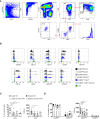


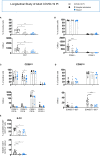


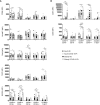
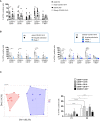
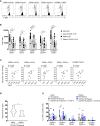
References
Publication types
MeSH terms
Substances
LinkOut - more resources
Full Text Sources
Medical
Research Materials
Miscellaneous

